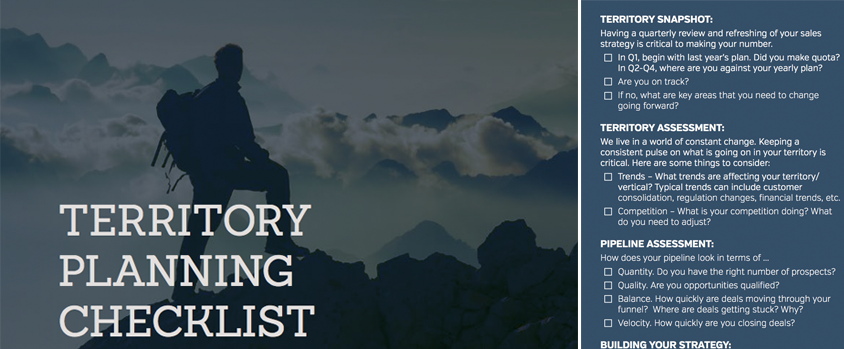Selling in a Down Economy
How can sales teams effectively sell a product or service during a down economy? Growing sales in a down economy is a difficult challenge that requires introspection into your current selling methods. As we’ve all experienced, businesses are spending less and trying to make smart choices regarding expenses and managing cashflow. However, organizations are still spending money on things that solve real problems. How do you make sure your product is a necessity and not a “nice to have”? How do you make sure you or your sales team is linking to the REAL problems the customer must solve?
We recommend creating a customer-centric approach and providing your sales team with a clear set of plays to run to win more deals.
Here are four elements that must be central to your sales strategy:
1. An Ideal Client Profile built for now
Develop a strong understanding of who your ideal client is and/or who it should be. Take the time to study this and get refined on what this is for you. Most Ideal Client Profiles focus on things like Industry, Revenue, Employees, Location, etc. In a down economy, you must go deeper. People are spending money on solving acute problems. You must know not only who to target but what their problems are and how you can solve them. What problems are recession-related that have a specific sense of urgency now? Things like reducing costs that free up cash, improving time to collections, increasing revenue, etc. Can you position yourself as an asset to help solve these urgent problems? Spend time to get this right so you are clear on who you are after. Then build a plan to target those in your Ideal Client Profile.
2. Methodology or Mythology?
Develop a sales methodology for your sales team to use. A sales methodology is a structured approach that a salesperson uses to close deals. Many organizations think they have a methodology. If you aren’t sure whether you have one, you probably don’t. You need to get one. At a minimum, you need to equip your sales team with a clear set of sales plays that will help bring the customer’s problems to light and demonstrate how your product/services help solve them. As part of your play, provide your team with market insights and talk tracks to demonstrate understanding of their issues and the discovery questions to understand how the issues are impacting their business. Without a sales methodology and a set of plays, organizations tend to default to broad product pitches based on features and benefits to see what resonates. This is commonly referred to a the “spray and pray” approach. In today’s environment, selling with this approach greatly decreases your chances of winning.
3. Product-Centric VS. Customer-Centric
To build on the idea of avoiding product pitches, selling successfully in this climate requires a customer-centric approach. Which is to say, putting the customer’s problems first. Most organizations tend to have a product-centric approach. A good example of this is how companies handle first meetings. They tend to focus on their own company, their big ideas, and how great their product is. This approach usually leads to some general interest by the customer with a rush to a demo with a feature and benefit presentation. A product-centric
approach forces the buyer to interpret all the things you do and identify how they might be able to use your product. The exact opposite is the customer-centric approach, which starts with the common problems you help companies like them solve, seeks to understand their current situation and what challenges they are facing, and then describes how your products helps solve those specific problems. You can only do this by focusing on them first. Asking good questions, understanding their challenges and the impact those challenges are having on their business.
4. Equip your team with stories for success
How do we link our solutions to their problems? Yes, good discovery and understanding the problems is the first priority and step one. The second priority is equipping the sales team with customer success stories and tangible examples like research data, infographics, videos, and one-pagers. Your team must bring valuable insights. They must provide something valuable regarding the market or challenge they face, and how your product solves it. Your sales team must push the prospects and clients to see things differently. “Our clients are experiencing this…. or our research says this… and this is the impact it could have on your business that can help you save….”. This sounds a lot different than leading with how great your product or service is. Marketing typically creates content to help sell products, but it’s critical to ensure that this content is aligned with your customer-focused sales strategy. They can’t be in their own silo creating feature-function content.
In conclusion, selling in a down economy is a difficult task that requires a customer-centric approach and a clear set of sales plays. By targeting better, developing a sales methodology, shifting from a product-centric to a customer-centric approach, providing content to sales teams, and simplifying the engagement process, businesses can rise above the current market dynamics and win more deals. It’s important to remember that while the economy may be down, businesses are still spending money on things that solve real problems. By focusing on solving these problems and helping clients visualize how your product can help them, you can position yourself as an asset and improve your chances of success.





